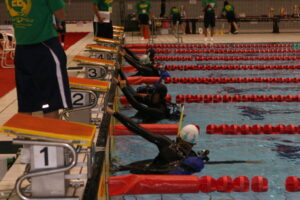
BC
Hollis HD200

Appeared in DIVER June 2020
My first 65-minute dive in the Hollis HD200 wing turned out to be an hour-long commercial for the BC. Unintentionally, I had become the ultimate silent salesman.
I’d been cruising along the wreck trail that is a highlight of Camp Bay, Gibraltar, my usual testing ground. My buddies were old friends, Dennis Santos and Danny Freyone, both with decades of diving experience.
They had dived in the early horse-collar BCs before progressing to jacket models and then, for twin-set diving, to wings.
When we surfaced, Danny had immediately commented: “That’s a great BC. Your trim was perfect.”
“It floats you really high on the surface,” Dennis added. Such accolades are almost embarrassing to report, because they make my reviews look like advertorial, and I have to try to find faults to balance them and prove that I’m not the dive industry’s favourite yes-man.
Hollis was founded by Bob Hollis, who also created Oceanic, one of the world’s biggest equipment manufacturers. Oceanic was born in the 1970s, long before the emergence of technical diving, and offers a wide range of products. Hollis is newer, with a narrower choice of kit, marketed towards tekkies.
At the end of the day, however, diving is diving and whether you’re a newly minted occasional recreational diver or a hardheaded technical one, a lot of kit is interchangeable.
This crossover is very apparent in single-cylinder wing BCs, the category into which the Hollis HD200 falls.
The Design
The HD200 is a well-specified, weight-integrated, back-inflation BC. It’s horseshoe-styled, meaning that the air-cell runs down either side of your tank, but, unlike a doughnut air-cell, does not connect at the bottom.
The penalty is that air cannot flow freely throughout the air-cell, but the gain, popular with some technical divers, is a gap into which you can tie accessories, such as light canisters.
Both horseshoe and doughnut-style wings are popular, suggesting that neither air-cell has an outright advantage over the other – it comes down to personal preference.
As the prefix HD suggests, this is no lightweight – it weighs in at 4.3kg.
But then it’s expected to be used hard, serving, say, the UK diver who while at home is using a single backmount tank, plus a stage for deco, but then wreck-diving using a similar set-up in the Red Sea.
With 15-17kg of buoyancy, depending on size, there’s a lot of lift for such excursions.
The ability to shrug off abrasion from rusted metal for wreck ferrets and the accumulative day-to-day wear of regular use comes from Hollis’s choice of a twin-bag design. The buoyancy cell itself is made from thick polyurethane.
This in turn is protected by an outer shell of 1000-denier Cordura.
The HD200 uses a rigid backpack with a nice wide hand-grip at the top for moving your rig around. There’s a single camband for attaching your cylinder, with non-slip studs along the tank track for added security to prevent slippage.
An adjustable loop sits over your tank-valve to set the height of your cylinder, helping gear-handlers to assemble your rig correctly in your absence, for instance.
The backpack is well-cushioned. The harness comprises wide shoulder-straps with squeeze-buckle releases. Across your chest sits another strap, with two different height positions, so it won’t interfere with drysuit inflators.
The cummerbund is quickly adjustable for length simply by reaching in behind the backpack and tightening or slackening off the ends, which are held by a touch fastener.
This feature lets you keep the overlap of the cummerbund in front to a minimum. The benefit is a close fit, regardless of changes of suit or, within reason, fluctuations in your body mass.
A waist-strap sits over this, closed with a stainless-steel cam buckle.
Surplus strap can be adjusted by rethreading the nylon through the buckle slots and back on itself. So you should be able to achieve a very snug fit with the HD200 and still keep all your webbing neat.
Connecting to the waist-strap via another large squeeze-release buckle is the wide jock-strap, designed partly to prevent any cylinder or BC ride-up but also to take the strain of riding scooters, for which a large stainless-steel D-ring is included for a tether.
In fact the HD200 is festooned with D-rings, all sewn into fixed positions.
One of the two large ones that sit on the upper shoulders proved ideal for mounting my SPG where I could see it with just a downwards glance, while two other medium rings hang from the HD200’s lower edge, where I might clip off a reel.
At the back is a huge D-ring to which the jock-strap attaches – I could see myself pressing this into use for carrying my main DSMB. Four small D-rings are arranged in pairs on either side of the Hollis, one sitting near your outer shoulder blade and the other a little lower.
These could be used to bungee in a rolled-up back-up DSMB or small lift-bag, for example.
The Hollis has quick-release pouches for your main weights, and these sit around your waist. Two zippered cargo-pockets sit on top of these.
Sandwiched between the backpack and wing are the trim-weight pockets.
In Use
The HD200 was one of seven weight-integrated BCs I was testing in Gibraltar. Each was dived in a 7mm coldwater wetsuit, enabling me to test their buoyancy characteristics at depth, where suit compression influences the results, so keeping it real.
But testing began with a half-kilometre walk to the dive-site with the Hollis loaded up with around 35kg of kit, including 10kg of lead and a 15-litre steel tank.
It was very comfortable, a benefit of the wide and generously padded upper shoulder panels and the well-cushioned backpack.
Once in the water, I fully inflated the BC and measured the distance from the waterline to my mouth. A diver who is out of air and doesn’t have a snorkel in chop can take in a lot of spray and water if set low in the waves.
The HD200 let me ride high, clearing 17cm. This is a good performance, given the 4kg of air the BC had to lift, so an out-of-air diver would float even higher. Surface stability was also excellent, and I was kept vertical without having to fin. This position gives you a good view of your pick-up boat approaching, or lets you brief students comfortably.
As Danny pointed out, the HD200 held me perfectly horizontal under water. This greatly aids streamlining, saving you air, and means that there’s less chance of you kicking up the silt when working close to the bottom.
It’s great for photographers, as you can get really low to shoot subjects on flat seabeds.
Want to hover upside-down for a difficult shot? Easily done in the Hollis.
A further credit to the HD200 is that I don’t like 15-litre cylinders because they tend to roll me. That never happened with the Hollis.
Controls
It takes around eight seconds to fill the air cell at 10m. The direct feed is progressive, meaning that air flows faster the harder you press the button. There’s the usual oral-inflation pipette and a dump button. The buttons are not distinguished by shape or colour.
As usual, I wanted to confirm that if the direct feed jammed open, which can happen if silt gets into the mechanism or icing occurs – either usually a result of diver error – the upper dumps can vent faster than the BC can inflate to prevent a runaway ascent.

Above, from top: Rapid exhaust and shoulder dump; shoulder release, pre-bent D-ring and shoulder-dump toggle; weight-release; rear dump.
Both the shoulder-dump and rapid-exhaust dump, operated by pulling down on the oral-inflation hose, performed flawlessly.
I also tested stopping distance, to see how fast a runaway ascent could be braked. I did this by fully inflating the air-cell while holding onto a shipwreck, then letting go. The shoulder-dump stopped the ascent within a metre, the rapid-exhaust valve within 1.5m, which is standard.
The toggles on the shoulder and single bum-dump are easy for the user to locate and operate by feel.
The main weights are easy to install after you’ve kitted up, if you prefer not to manhandle the fully loaded scuba system. They are released by squeezing pinch-clips.
Pinch-clips are used by many BC manufacturers; they prevent the accidental jettisoning that can happen with grab-handles that you have to pull. (Although these do have the potential to snag and self-release, I have to say that in more than 10 years of using them it has yet to happen to me.)
The HD200 weight-release is easy to use, although I’d have preferred it if the pouches didn’t have what look like grab-handles. Paradoxically, the design does seem to improve on some other squeeze-buckle releases, which have a D-ring on a bit of loose webbing that you grab to pull out your weights should they stick.
With the Hollis, once you squeeze the buckle your hand naturally falls forward onto the grip, so you don’t have to search for it and slip your thumb or fingers into a D-ring if a weight does stick in an emergency ditching situation.
Instead, your hand instinctively pushes the weight out, if it hasn’t dropped clear.
The problem I can foresee, however, is a buddy mistakenly pulling on those grips in an emergency and overlooking the squeeze releases. I would also have preferred hi-vis colours to clearly identify the weight-releases, dump-valve toggles and direct-feed and dump buttons to an assisting diver.
The cargo pockets aren’t bad, and will just about take a tightly rolled full-size DSMB.
Each has grommets to attach a knife for left- or right-hand use. They are a very similar design to those on my own wing, in which I tend to pack things I’m only likely to take out, such as a folding snorkel or buoy.
In practical terms, with so many D-rings, items you might want to use briefly during your dive, then restow, such as torches, would be much better clipped off to these anyway.
Conclusion
Overall, the Hollis HD200 is a very comfortable and capable BC, with lots of practical accessory stowage options.
As Danny and Dennis pointed out, and I can happily confirm, the Hollis HD200 delivers superb surface flotation and perfect underwater buoyancy control. Recommended.
Specs
TESTER> Steve Warren
PRICE> £520
SIZES> S, M, L, XL
WEIGHT> 4.3kg
DUMP VALVES> 3
D-RINGS> 8
CONTACT> hollis.com
The post DIVER TEST: Hollis HD200 appeared first on Divernet.
Read More BCs, Diver Tests, Gear Divernet
















